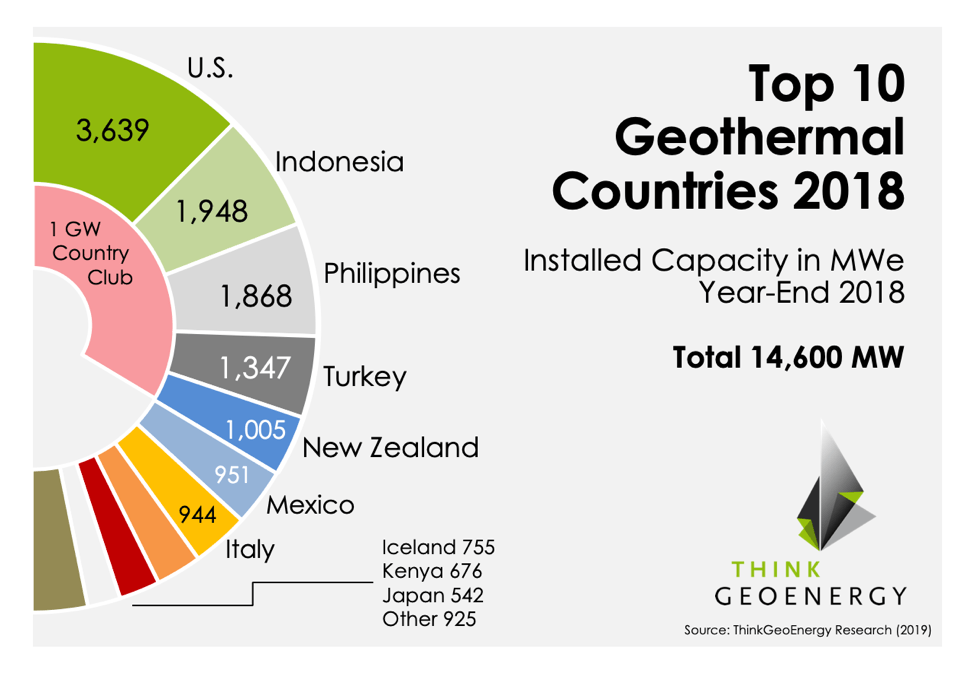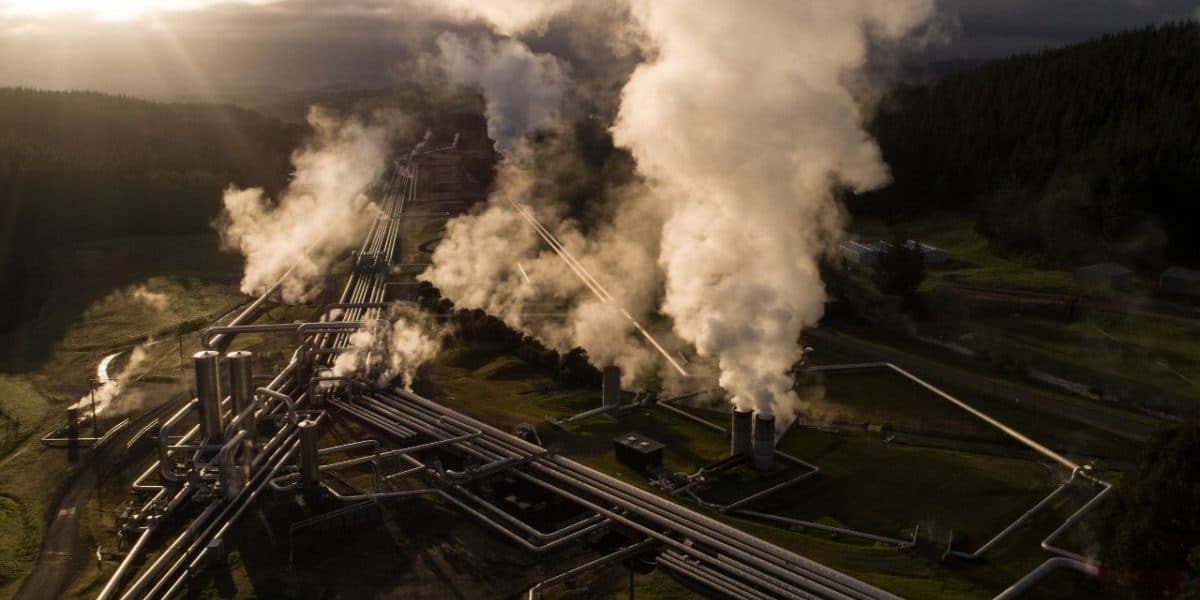Geothermal energy is being used world-wide as an affordable, clean and sustainable energy source. Currently, the most common way of capturing geothermal energy is by using steam and liquid from geothermal reservoirs to drive electrical generators.


About Geothermal Energy
Geothermal energy harnesses the heat produced by the decay of radioactive elements such as uranium and thorium deep in the earth. This heat escapes where Earth’s crust is thin, or where there is significant collision (generally along tectonic plate boundaries like the Ring of Fire). We can see proof of geothermal energy on the earth’s surface in spectacular natural displays like volcanoes, geysers, and hot springs.
The geothermal industry harnesses this naturally occurring heat as energy, and captures it using a variety of methods:
- Harnessing geothermal resources. Currently, the most common way of capturing geothermal energy is by using steam and liquid from geothermal reservoirs to drive electrical generators.
- Direct use of geothermal heat. The hot water from below the earth’s surface can be directly used for heating. It can be used to heat buildings, de-ice roads, heat spas, and heat water at fish farms. In Iceland, almost all their buildings are heated with geothermal water.
- Ground-source heat pumps. Geothermal heat pumps can heat and cool buildings by circulating air or liquid underground – taking advantage of the constant temperatures below the earth’s surface year-round.
FACT: The amount of heat within 10,000 metres of Earth’s surface contains 50,000 times more energy than all the oil and natural gas resources in the world.
About Leapfrog Energy
Seequent’s modelling software Leapfrog Energy was designed specifically for the geothermal industry, to help discover and manage geothermal energy resources. It was developed in collaboration with the New Zealand geothermal community, one of the earliest large scale users of geothermal energy.
The product is specifically used for geothermal resource evaluation, geothermal model review and maintenance, well planning for exploration, development and reservoir management, integration with TOUGH2 for reservoir simulation, 3D fault planning, and management of future development strategies.

The impact of Seequent technology
Leapfrog Energy is supporting companies who operate ~40% of the currently installed geothermal capacity worldwide. Compared to other energy plants, geothermal creates far less carbon dioxide to create energy.
- Geothermal plants create ~200 grams kWh carbon dioxide
- Coal/oil plants create ~950 grams kWh carbon dioxide
- Gas plants create ~400 grams kWh carbon dioxide
In most places Leapfrog Energy is used, geothermal energy is replacing coal energy generation. So if we assume 100% of the geothermal energy is replacing coal… That means Leapfrog Energy is involved in reducing about 30 million tonnes of C02 emissions every year.
The Future of Geothermal Energy
The renewable energy industries are growing after the signing of the Paris Agreement in December 2015, with geothermal specifically receiving support from the Global Geothermal Alliance. This group pledged to support a five-time increase in the industry’s global installed geothermal capacity by 2030. This industry is on the cusp of becoming a leading source of clean, renewable energy.
As a leading provider of geothermal software, Seequent are ready to help the industry realise its goals in the upcoming years. There’s an exciting future ahead for geothermal energy – one we are going to be a part of.





